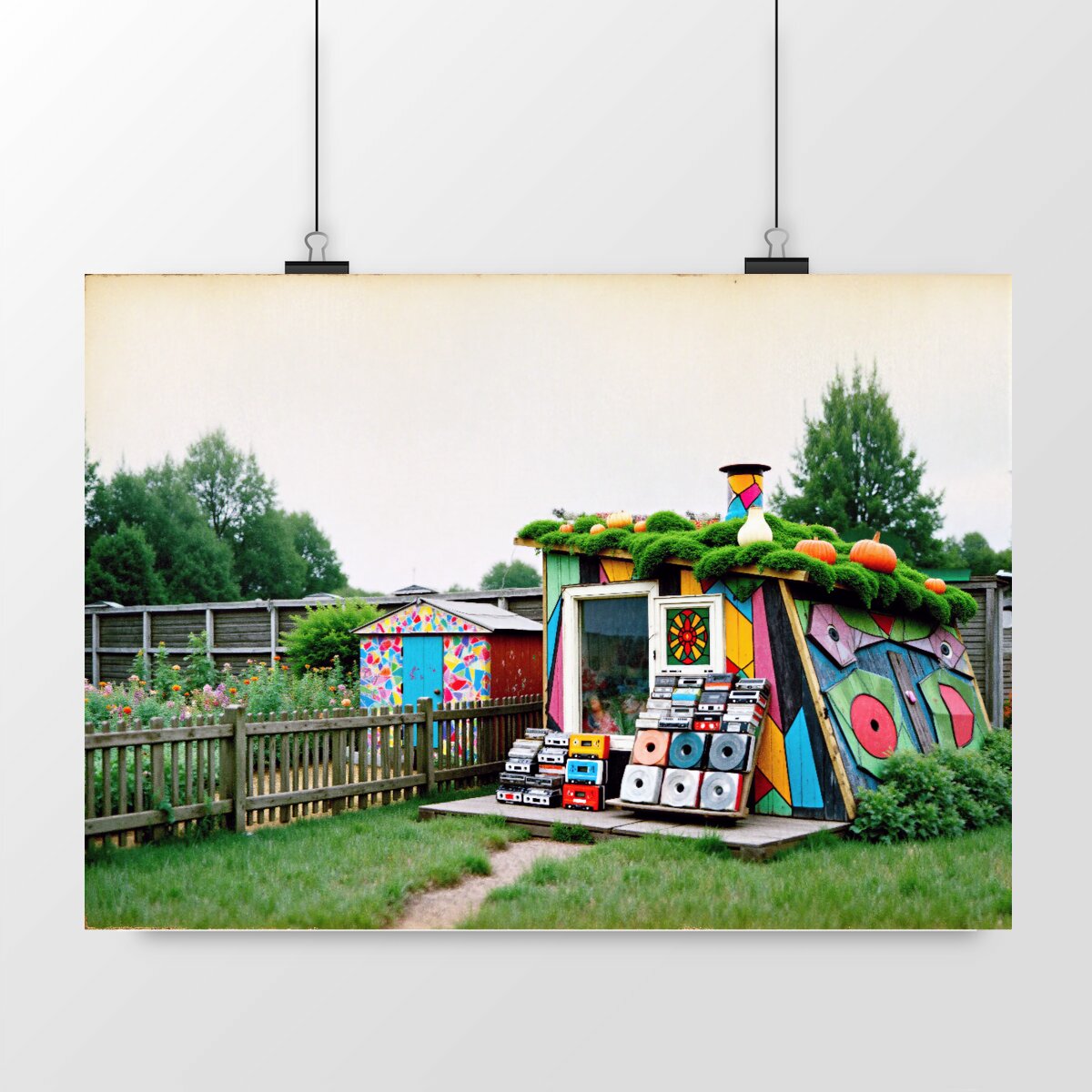

Figur 5 (Hvidovre gør gode tider bedre)
50.00 €
Museum-quality Luster paper Giclée printing quality, 12 colors Paper weight: 250 g/m2 FSC Label
Figure 5: Klondike
In the basements beneath the so-called Ford-box houses and summer homes of Svendebjerggård—an area colloquially known as Klondike—residents established numerous makeshift recording studios. Using homemade equipment crafted from old car parts and discarded radios, they created their own recording facilities.
The self-produced vinyl records quickly became an integral part of the area's informal economy. At Kudsk's grocery store on Søstjernevej, records could be exchanged for groceries, and within the self-build neighbourhood, music circulated freely between homes as a form of local currency. A well-made recording might be traded for a day's help with house construction or for vegetables from the allotment gardens. Those without means often received records as gifts, as music was viewed not as a commodity but as a shared resource for communal enjoyment and exchange.
According to local legend, an elderly widow’s self-built house became a hub of this alternative economy. In her basement, new residents could have their first records pressed free of charge on a record press assembled from old Ford parts. In return, they were expected to contribute to the community in whatever way they could—whether by providing food, labour, or additional musical offerings to the neighbourhood’s growing collection of records.
